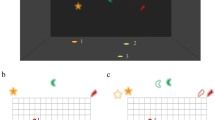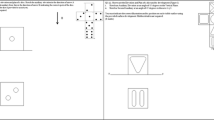Abstract
There is a clear contemporary interest for developing science, technology, engineering, and mathematics (STEM) at schools. Besides, there exist a lot of research that justify the importance of spatial ability to obtain success in STEM subjects. Nevertheless, the spatial ability is relatively ignored in the general practice of teaching and learning in the K-12 setting. The goal of this paper is to analyse the evolution of spatial abilities of students that assist to a STEM course. Additionally, the evolution of their mechanical reasoning is also analysed. The STEM course was designed and implemented for the first time in a 6th grade class (primary school) and a 7th grade class (secondary school) throughout a whole academic year. First, the spatial ability and the mechanical reasoning of the students were assessed with the corresponding prepared pre-tests. Then, after finishing the STEM course, the students were tested with analogous post-tests. An exhaustive analysis of the obtained results is provided in the paper. It is shown that the spatial ability of the students was definitely improved. Furthermore, this improvement was statistically significant. Results also evidenced that the mechanical reasoning of the participants was also improved, although the improvement was not statistically significant. Moreover, this research showed that, in general, obtained results do not depend significantly on the gender of the participants. Finally, results manifested the statistically significant difference of spatial ability between 6th grade and 7th grade students. The difference between grade levels was not as significant in the mechanical reasoning case.

























Similar content being viewed by others
References
Andersen, L. (2014). Visual-spatial ability: Important in STEM, ignored in gifted education. Roeper Review, 36(2), 114–121.
Bakker, M. (2008). Spatial ability in primary school: Effects of the Tridio® learning material, Master thesis of psychology. University of Twente, Enschede.
Bell, D. (2016). The reality of STEM education, design and technology teachers’ perceptions: A phenomenographic study. International Journal of Technology and Design Education, 26, 61–79.
Bennet, G. (2008). Bennett mechanical comprehension test. San Antonio: Pearson.
Board, N. S. (2010). Preparing the next generation of STEM innovators: Identifying and developing our nation’s human capital. Washington: National Science Foundation.
Bybee, R. (2013). The case for STEM education: Challenges and opportunities. Arlington: NSTA Press.
Carrol, J. (1993). Human cognitive abilities: A survey of factor-analytic studies. Standford, CA: Standford University, School of Education Aptitude Research Project.
Contero, M., Naya, F., Company, P., & Saorn, J. L. (2006). Learning support tools for developing spatial abilities in engineering design. International Journal of Engineering Education, 22(3), 470–477.
Cuperman, D., & Verner, I. (2015). Fostering analogical reasoning and design skills through creating bio-inspired robotic models. In Procedia conference on life cycle engineering (CIRP) (Vol. 36 pp. 285–290).
Ekstrom, R. B., French, J. W., Harman, H. H., & Dermen, D. (1976). Kit of factor referenced cognitive tests. Princeton, NJ: Educational Testing Service.
French, J. (1951). The description of aptitude and achievement tests in terms of rotated factors. Chicago: University of Chicago Press.
Hegarty, M., & Waller, D. (2004). A dissociation between mental rotation and perspective-taking spatial abilities. Intelligence, 32, 175–191.
Humphreys, L., Lubinski, D., & Yao, G. (1993). Utility of predicting group membership and the role of spatial visualization in becoming an engineer, physical scientist, or artist. Journal of Applied Psychology, 78(2), 250–261.
Julià, C., & Antolí, J. Ò. (2016). Spatial ability learning through educational robotics. International Journal of Technology and Design Education, 26(2), 185–203.
Lin, H. (2016). Influence of design training and spatial solution strategies on spatial ability performance. International Journal of Technology and Design Education, 26, 123–131.
Linn, M., & Petersen, A. C. (1985). Emergence and characterization of sex differences in spatial ability: A meta-analysis. Child Development, 56(6), 1479–1498.
Liu, A. S., & Schunn, C. D. (2017). Applying math onto mechanisms: Mechanistic knowledge is associated with the use of formal mathematical strategies. Cognitive Research: Principles and Implications, 2(1), 6. doi:10.1186/s41235-016-0044-1.
Lohman, D. (1979). Spatial ability: A review and reanalysis of the correlational literature. New York: Cambridge University Press.
Lord, T. (1987). Spatial teaching. The Science Teacher, 54(2), 21–34.
Lubinski, D. (2010). Spatial ability and STEM: A sleeping giant for talent identification and development. Personality and Individual Differences, 459, 344–351.
Maeda, Y., & Yoon, S. (2013). A meta-analysis on gender differences in mental rotation ability measured by the purdue spatial visualization tests: Visualization of rotations (PSVT:R). Educational Psychology Review, 25(1), 69–94.
McGee, M. G. (1979). Human spatial abilities: Psychometric studies and environmental, genetic, hormonal, and neurological influences. Psychological Bulletin, 86(5), 889–918.
McKenna, A. F., & Agogino, A. M. (2004). Supporting mechanical reasoning with a representationally-rich learning environment. Journal of Engineering Education, 93, 97–104. doi:10.1002/j.2168-9830.2004.tb00794.x.
McMunn, R. (2012). Mechanical comprehension test. Sample mechanical comprehension test questions and answers. London: How2become Ltd.
Metz, S., Donohue, S., & Moore, C. (2012). Spatial skills: A focus on gender and engineering. Resource document. http://www.engageengineering.org/associations/11559/files/ARP_SpatialSkills.pdf. Accessed June 2014
National Governors Association. (2007). Building a science, technology, engineering and math agenda. Retrieved from: https://www.nga.org/files/live/sites/NGA/files/pdf/2007/0702INNOVATIONSTEM.PDF. Accessed August 2017
Principles and Standards for School Mathematics. (2000). National Council of Teachers of Mathematics (NCTM).
Ritz, J. M., & Fan, S. C. (2015). STEM and technology education: International stat-of-the-art. International Journal of Technology and Design Education, 25, 429–451.
Sorby, S. A. (2009). Educational research in developing 3-d spatial skills for engineering students. International Journal of Science Education, 31(3), 459–480.
Sutton, K., & Williams, A. (2007). Spatial cognition and its implications for design. Hong Kong: International Association of Societies of Design Research.
Verner, I. (2004). Robot manipulations: A synergy of visualization, computation and action for spatial instruction. International Journal of Computers for Mathematical Learning, 9, 213–234.
Author information
Authors and Affiliations
Corresponding author
Rights and permissions
About this article
Cite this article
Julià, C., Antolì, J.Ò. Enhancing spatial ability and mechanical reasoning through a STEM course. Int J Technol Des Educ 28, 957–983 (2018). https://doi.org/10.1007/s10798-017-9428-x
Accepted:
Published:
Issue Date:
DOI: https://doi.org/10.1007/s10798-017-9428-x




